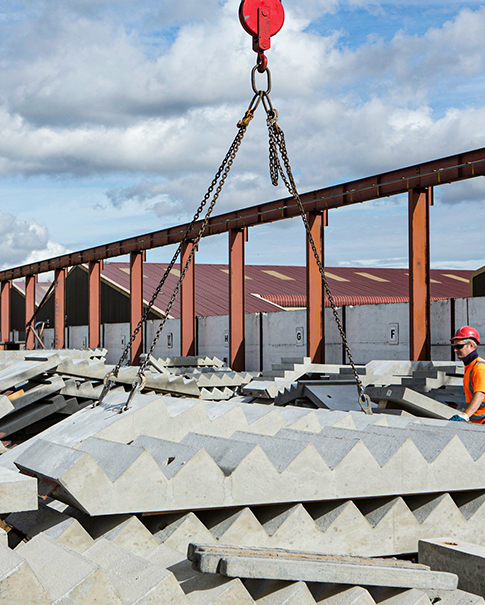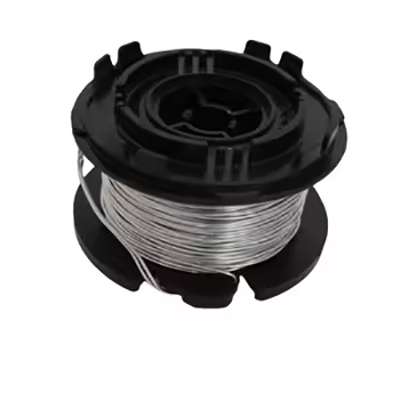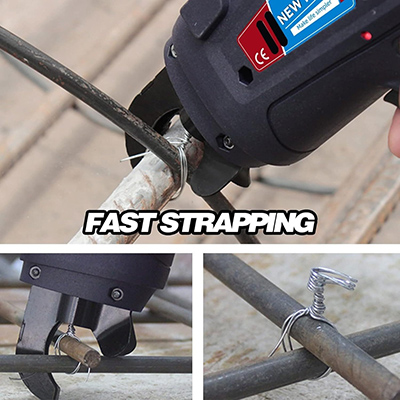-

Wyślij do nas e-mail
sale@lscmagnetics.com -

Numer kontaktowy
+86 -13559234186

Wyślij do nas e-mail
sale@lscmagnetics.com
Numer kontaktowy
+86 -13559234186
Najważniejsze korzyści ze stosowania drutu do wiązania prętów zbrojeniowych w konstrukcjach żelbetowych
Nov 05, 2025Dlaczego drut stalowy w kręgach do wiązania prętów zbrojeniowych wciąż cieszy się tak dużą popularnością, biorąc pod uwagę ciągły rozwój nowych technologii, takich jak spawanie i łączenie mechaniczne? Przyjrzyjmy się dziś bliżej jego głównym zaletom.


1. Maksymalna elastyczność i zdolność adaptacji
Konstrukcje budowlane to nie tylko kombinacja prostych linii; są one pełne skomplikowanych węzłów, narożników i elementów o nieregularnych kształtach. Zwoje drutu zbrojeniowego działają jak wszechstronny „krawiec inżynieryjny”, zdolny do dopasowania się do każdego skomplikowanego kształtu.
Trójwymiarowe, elastyczne nawijanie: Drut można nawijać wokół przecięć prętów zbrojeniowych w dowolnym kierunku, dzięki czemu nadaje się szczególnie do elementów o nieregularnych kształtach, gęstych połączeń belek i słupów oraz zakrzywionych ścian — miejsc, w których spawanie jest utrudnione lub w których nie można przykręcić tulei.
Brak strefy wpływu ciepła: zapobiega odpuszczaniu, kruchości i odkształceniom materiału bazowego spowodowanym wysokimi temperaturami spawania, zachowując oryginalne właściwości mechaniczne.
Kompatybilny ze wszystkimi typami stali zbrojeniowej: Niezależnie od tego, czy jest to zwykła stal gwintowana o wytrzymałości 400 MPa, stal o wysokiej wytrzymałości 500 MPa, czy też zbrojenie ze stali odpornej na wstrząsy sejsmiczne klasy „E” lub stali nierdzewnej, zwoje drutu traktują je wszystkie tak samo.
2. Niezrównana efektywność ekonomiczna
W projektach na dużą skalę kontrola kosztów jest priorytetem. Drut do wiązania prętów zbrojeniowych w szpulach oferuje znaczną przewagę w tym zakresie.
Bardzo niskie koszty narzędzi: Wymagane narzędzia są bardzo proste — zwykły hak lub automatyczny pistolet do wiązaniaoraz zwoje drutu. Ta początkowa inwestycja jest znikoma w porównaniu z drogim, specjalistycznym sprzętem, takim jak spawarki i szczypce hydrauliczne.
Niskie koszty materiałów: Sam drut wiązałkowy to wyżarzany drut ze stali niskowęglowej, niedrogi i powszechnie dostępny. Chociaż koszt pojedynczego węzła jest niski, sama ilość drutu użytego w całym budynku przekłada się na znaczną ogólną opłacalność.
Niski poziom umiejętności: Szkolenie wykwalifikowanego pracownika zajmującego się wiązaniem prętów zbrojeniowych jest znacznie szybsze niż szkolenie wykwalifikowanego spawacza lub operatora połączeń mechanicznych, co znacznie obniża koszty pracy i czas szkolenia.
3. Niezawodna synergistyczna wydajność
Istota konstrukcji żelbetowych tkwi w „synergicznej współpracy” między stalowym zbrojeniem a betonem. Połączenia zakładkowe doskonale spełniają tę podstawową zasadę.
Zachowanie właściwości zbrojenia: Połączenia zakładkowe nie tworzą strefy wpływu ciepła w materiale macierzystym zbrojenia stalowego, co pozwala uniknąć ryzyka kruchości i obniżenia wytrzymałości, które mogą wystąpić podczas spawania. W pełni zachowują pierwotne właściwości mechaniczne zbrojenia stalowego.
Dopuszczalność niewielkiego poślizgu: Przy obciążeniach krańcowych połączenia zakładkowe pozwalają na niewielki poślizg zbrojenia stalowego, co w rzeczywistości jest korzystnym mechanizmem „redystrybucji naprężeń”. Zapobiega to koncentracji naprężeń, zwiększając ciągliwość konstrukcji i poprawiając jej odporność na wstrząsy sejsmiczne. Z kolei połączenia spawane są zbyt sztywne i często stają się kruche w przypadku uszkodzenia.
4. Wyjątkowa wydajność budowy
W przypadku siatek stalowych o dużej powierzchni i dużej gęstości oraz konstrukcji szkieletowych, wydajność wiązania jest wyjątkowo wysoka.
Praca na linii montażowej: Pracownicy mogą być rozmieszczeni w różnych obszarach, aby wykonywać operacje oprawy jednocześnie, tworząc wysoce wydajną linię montażową. Zwłaszcza dzięki powszechnemu stosowaniu automatycznych pistoletów do oprawy, wydajność oprawy znacznie wzrosła; pociągnięcie haka zajmuje mniej niż sekundę, znacznie przewyższając prędkość spawania.
Brak konieczności wcześniejszego przygotowania: Binding eliminuje potrzebę żmudnych prac przygotowawczych, takich jak czyszczenie spoin i podgrzewanie wstępne; jest gotowy do użycia natychmiast, co pozwala znacznie skrócić czas pomiędzy procesami.
5. Zielony i zrównoważony: pomijany aspekt niskoemisyjności
Porównanie zużycia energii — w całym procesie, od produkcji stali do cynkowania, każdy kilogram drutu wiążącego emituje około 2,3 kg CO₂, podczas gdy spoina o tej samej wytrzymałości wymaga 4,1 kg (wliczając materiały spawalnicze i energię elektryczną), co skutkuje 44-procentową redukcją śladu węglowego.
Brak odpadów gazowych, brak iskier — emisja pyłu PM2,5 i manganu na miejscu jest zerowa, co eliminuje potrzebę inwestowania w urządzenia do oczyszczania dymów spawalniczych. 100% nadaje się do recyklingu — podczas rozbiórki drut stalowy i pręty zbrojeniowe trafiają razem do systemu recyklingu złomu stalowego, a stal stopowa z tulei jest mieszana z głównym rodzajem stali, co obniża jej stopień recyklingu.
Podsumowując, wiązania prętów zbrojeniowych z użyciem zwojów drutu stalowego rozwiązują podstawowy problem „utrzymania prętów zbrojeniowych we właściwym położeniu” w konstrukcjach żelbetowych, minimalizując koszty, narzędzia i czas, a jednocześnie dbając o jakość, niski ślad węglowy i efektywność ekonomiczną przez cały cykl życia. Wraz z pojawieniem się drutu stalowego z powłoką wysokocynkową, odpornego na korozję i mechanicznych urządzeń do wiązania, ta tradycyjna metoda stale ewoluuje. W przypadku nowoczesnych projektów inżynieryjnych, w których priorytetem jest szybkość, opłacalność i przyjazność dla środowiska, wiązanie drutem stalowym nie jest rozwiązaniem przejściowym, lecz optymalnym rozwiązaniem długoterminowym.
TAGI :